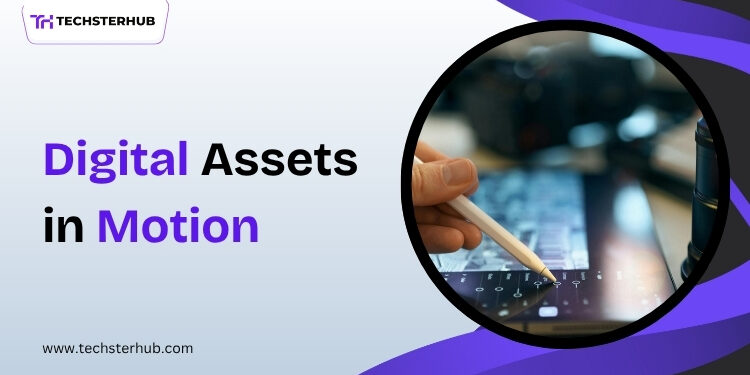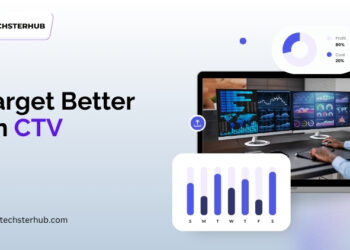Digital transformation has grown the volume, velocity and complexity of brand content exponentially. As organizations manage thousands and in many cases millions of digital files across global teams, the role of digital asset management (DAM) has become mission-critical.
For many years, DAM platforms were set up as static repositories – these are central repositories, libraries to hold assets, organize and retrieve assets. They were useful to have for maintaining control, brands, compliance and rights management but the application of them was mostly operational and reactive.
Today, the requirements of marketing and creative operations are completely different. Content is no longer stored and simply reused. In other words, it must be adapted quickly, made personal, distributed, measured, and optimised at any customer touchpoint. In this new environment, DAM cannot continue to be a system of record. It needs to become a system of actions – a dynamic machine that drives the supply chains of content and boosts the performance of marketing.
This article examines the change in the DAM landscape as well as what modern organizations need to prioritize to move away from storage towards speed, intelligence and strategic content activation.
The Traditional DAM: A Record-keeping System
Some DAM investments steeped in early days originated with basic business requirements. Brands required:
- A single point of fact with regards to assets
- Version control to prevent duplication as well as inconsistency
- Secure the rights management for the IP
- The Economical Answer to Increasing Content Repositories
- Search and discovery to support business processes
These systems offered order where there existed chaos. They supported the marketing teams to avoid costly mistakes, keep the governance in place and integrity of brands.
Yet, even with these benefits, traditional DAMs have been built with a linear view towards the use of content to create, finalize, store, and retrieve as needed. But today, content exists in perpetual motion.
The New Marketing Reality: Content at Scale
Content has become a driver of all stages in the customer journey. It is being produced in much higher volume, at higher cadence, with much greater personalisation expectation.
This change introduces limitations in DAM platforms that operate as repositories only. Marketing teams require:
- Assignment and Investigation of Spread-out parts and agencies
- Rapid Changing to Channel-Specific Requirements
- Automated business flows from production to delivery
- Insight to understand the way assets perform
- Integration across their entire martech and AdTech ecosystem
Without these capabilities the content engine is at a standstill. There is an increase in operational friction. Creative teams create bottlenecks. Time-to-market slows. Content costs rise.
This is why DAM is changing because the demands on content have grown well beyond storage and retrieval.
An Introduction to the System of Action
A system of action takes the fundamental strengths of digital asset management (control and organization) and extends them as active enablement. The DAM becomes an intelligent command centre linking every step each phase of the content lifecycle:
- Ideation and creation
- Review and approval
- Localization and adaptation
- Distribution and activation
- Governance and rights management
- Performance feedback and optimization
It does not only host content – it orchestrates content.
An action-oriented approach turns DAM away from being a passive library towards being an active asset which improves productivity, accelerates brand impact and delivers measurable business value.
Key Capabilities Defining the Modern DAM
Today’s leading-performing DAM solutions have a number of characteristics that help organizations meet the global demands for content effectively:
1. Deep Workflow Automation
Options to enrich the metadata and automate routing, approvals and rights checks simplify the production process and decrease the amount of manual work.
2. Strong Integrations with the Business Ecosystem
DAM is most valuable when integrated with the systems that drive and fuel omnichannel activation – CMS, CRM, PIM, CDP, social publishing and creative tools.
3. Personality Scalable Capabilities
Dynamic asset rendering and localisation with multi-market capabilities which don’t create operational drag.
4. AI-Driven Intelligence
AI helps improve the accuracy of metadata, discover assets, provide usage recommendations and performance insights thus, it improves efficiency and relevance.
5. Content Governance & Content Compliance
Level of real-time rights enforcement, brand guidelines and audit trails for protection of quality and reduced risk.
6. Measurement and Optimization
Analytics show which assets are actually driving marketing performance, in order to make informed decisions in which to invest creativity.
These types of capabilities transform DAM into the core of the content supply chain to enable constant action.
Why This Evolution Matters
High-performing organizations have realized that today’s digital experience requires that content is currency. A system of action DAM allows them to:
- Always able to be consistent when scaling creative output
- Get time- sensitive campaigns to market speedily
- Reduce duplication and related production cost
- Global teams: Enable global teams to run together in the light
- Deliver personal experiences that increase customer engagement
- Cada Decision Driven by quantifiable content effectiveness
The ROI of DAM is no longer in storage reduction or fewer asset requests. It is measured in the outcome of the business growth.
How AI is playing an increasing role in DAM
Artificial intelligence is reshaping the ecosystem of DAM by enhancing smart and fast operations in the core capabilities:
- Automated object recognition and metadata tagging
- Predictive asset recommendations to support activation
- Content integrity checks for brand and compliance
- Performance analytics that support real-time optimization
As AI models improve, DAM systems will go even more in the proactive execution process. For example, AI can make marketers know:
- Which content should be created next
- Which assets should be retired or refreshed
- Where content gaps exist in the buyer journey
- How best to localize assets for regional trends
AI helps to enhance the role of DAM as a center of strategic intelligence.
DAM as the Hub Spoke of Content Activity
Content is only a value driver when it reaches audiences. That means DAM needs to be closely linked with all the channels that are in contact with the user experience.
Organizations are also increasingly creating unified content ecosystems of which DAM is part of:
- Product content platforms
- Sales enablement tools
- Personalized experience engines
- Marketing automation systems
- E-commerce and DTC storefronts
- Ad management and programmatic platforms
This ensures assets are transferred automatically from creation to activation leading to an enormous increase in operational agility.
The Business Case: From Operational Cost to Strategic Investment
To justify the investment, DAM needs to prove the return. System of action capabilities to provide measurable outcomes:
- Shorter campaign cycles
- Faster asset localization and versioning
- Reduced waste in production and storage
- Increased asset usage and performance
- Greater operational scalability without additional headcount
- Improved brand governance across markets
Executives grab efficiency and effectiveness are rare combination in digital transformation.
Organizational Change and Success Factors
Technology alone is not the transformative part of the DAM function. The implementation elements of the project should include:
- Clear process alignment across teams
- Defined metadata models and governance frameworks
- Employee adoption enabled by training and cultural reinforcement
- Vendor partnerships that support long-term roadmap evolution
- Commitment to continuous optimization and feedback loops
When organizations incorporate DAM into their everyday processes it changes team behavior from managing assets to mobilizing content.
The Future of the Digital Asset Management
The next stage of DAM maturity is characterized by three underlying trends:
- AI-augmented operations enabling predictive content efficiency
- Real-time activation through deeper channel integrations
- Performance-led decision-making shaping future content investment
DAM will become even more the source of intelligence for creative agility and marketing momentum. It will remain a system of record but its most valuable role will be as the system of action that will propel content through every stage of the value chain.
Conclusion
The digital asset management landscape has completely shifted. The static library is becoming a dynamic engine that drives the modern content operations. In this world where speed, personalization and performance are the keys to success, DAM needs to be an intelligent system of action that unifies, speeds up and optimizes the entire content lifecycle.
Organizations that adopt this evolution will see better control of brand, faster implementation, higher engagement and greater return on creative investment. They will create ecosystems of content that not only will record the past but will drive the future of marketing excellence.
Digital asset management is no longer about asset storage – it is about unlocking the ongoing potential of assets.











